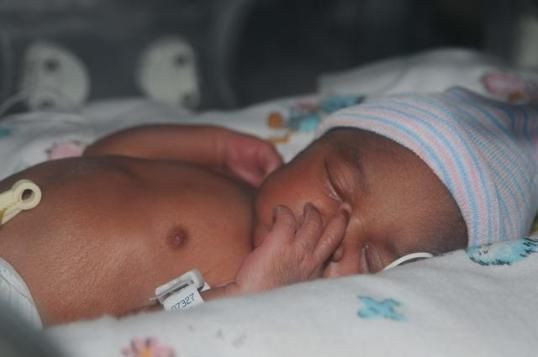Premature Baby Development Problems Can Be Tracked With New Brain Monitor

Premature baby development problems are all too common; about 480,000 babies born in the United States each year are preemies born before the full pregnancy term, and 1-2 percent of the 4 million infants born each year are at risk for death from respiratory distress.
A new non-invasive optical measurement system can monitor the brain activity of preemies by observing cerebral metabolism and blood flow, and has the potential to catch premature baby development problems that can lead to infant mortality.
The research technique, developed by a team led by Dr. Maria Angela Franceschini of Massachusetts General Hospital and Harvard Medical School, can screen for brain injuries and monitor injury progressions. Until recently there were no bedside methods that could indicate such injuries in preemies, which can contribute to abnormalities in premature baby development.
The technique was published in the Journal of Visualized Experiments (JoVE) on March 14.
"We want to measure cerebral vascular development and brain health in babies," Franceschini told JoVE.
Neuronal metabolism is hard to measure directly, but Franceschini's team figured how to quantify the brain's oxygen usage - a key measure of brain activity. Her near-infrared optical system measures oxygen saturation in blood flow, which can indicate premature baby development problems.
The technology builds on a method called continuous-wave near-infrared spectroscopy (CWNIRS), which measures oxygen saturation in blood but cannot monitor the brain in real time.
"CWNIRS has been used for many years but it only provides relative measurements of blood oxygen saturation," said Franceschini. "Our technology allows quantification of multiple vascular parameters and evaluation of oxygen metabolism which gives a more direct picture of infant distress."
Her technique, frequency-domain near-infrared spectroscopy (FDNIRS) is used along with another method called diffuse correlation spectroscopy (DCS) to get a much more accurate picture of newborn health.
"This technology will let us monitor babies who may be having seizures, cerebral hemorrhages, or other cerebral distresses and may allow us to expedite treatment," said Franceschini.
Franceschini hopes to streamline the technique so nurses can more carefully monitor premature baby development problems in neonatal intensive care units, and treat them quickly.



























